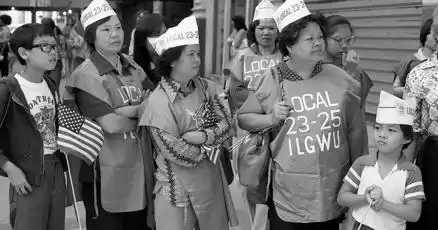Labor Day: The Significance and Reason We Celebrate
Labor Day, which is often associated with sales and barbecues, actually has its roots in the 19th-century fight for fair working conditions. It was originally designed to honor workers and their contributions to society. The holiday evolved over time and became less associated with unions, and the rule against wearing white after Labor Day has largely disappeared.
Labor Day, often associated with sales and barbecues, actually has a deeper meaning rooted in the fight for fair working conditions. Originally intended to honor workers as part of the organized labor movement in the 19th century, Labor Day has a rich history that is often overlooked.
Labor Day was first celebrated unofficially by labor activists and individual states in the late 1800s. It was New York that introduced a bill recognizing Labor Day, with Oregon being the first state to codify it into law in 1887. Other states, such as Colorado, Massachusetts, New Jersey, and New York, followed suit by the end of that year.
The holiday developed as unions were beginning to strengthen after the recession of the 1870s. In New York City, the Central Labor Union was formed as an umbrella body for unions across different trades and ethnic groups. Simultaneously, the Knights of Labor, the largest national labor convention at the time, held a convention in the city, complete with a large parade. However, the parade fell on a Tuesday, making it difficult for many workers to attend.
Despite the risks involved, workers started holding their own labor celebrations at the beginning of September, usually on the first Monday of the month. Over time, states began to recognize the holiday, and employers became more willing to give their employees the day off. It wasn't until June 28, 1894, that Congress officially passed an act naming the first day of September a legal holiday called Labor Day.
Labor Day initially represented the fight for specific improvements in working conditions, such as the eight-hour workday. It was an opportunity for workers to come together and discuss their priorities, while also acknowledging their contributions to society. There was also a more radical political aspect to the holiday, with labor leaders advocating for alternatives to the capitalist wage system, such as collective ownership of corporations or socialism.
As time went on, the radical politics surrounding Labor Day became less prominent. In contrast to the May Day holiday celebrated by many countries around the world, Labor Day in the United States became seen as a more moderate holiday. May Day also originated from the fight for the eight-hour workday in the late 19th century but was established by the Marxist International Socialist Congress.
By the turn of the 20th century, calls for transforming American life largely disappeared from Labor Day celebrations. It became less associated specifically with unions as more employers started giving their workers the day off. After World War II, there was a brief revival of Labor Day celebrations, but they tapered off again in the 60s and 70s.
Today, many people simply view Labor Day as the end of summer holiday, without much knowledge of its origins. However, it's important to remember the holiday's historical significance and the ongoing fight for fair working conditions.
On a lighter note, the outdated rule of not wearing white after Labor Day has no real consequences. The rule originated in the 19th century as a way for the upper and middle classes to distinguish themselves from the lower classes. White clothing was associated with summer vacations, a luxury only a few could afford. Labor Day marked the end of summer and the retirement of white summer clothes for the upper classes.
Fortunately, this arbitrary rule has largely disappeared since the 1970s. The "Youthquake" of the 1960s allowed young people to challenge old stylistic norms, including the Labor Day rule. So feel free to wear white after Labor Day without fear of breaking any fashion rules.
In conclusion, Labor Day is more than just a long weekend of sales and barbecues. It's a holiday with a rich history rooted in the fight for fair working conditions. While its origins may have faded from public consciousness, it's important to remember and appreciate the contributions of workers and the ongoing struggle for labor rights. And remember, you can wear white after Labor Day without any fashion repercussions.











Comments on Labor Day: The Significance and Reason We Celebrate